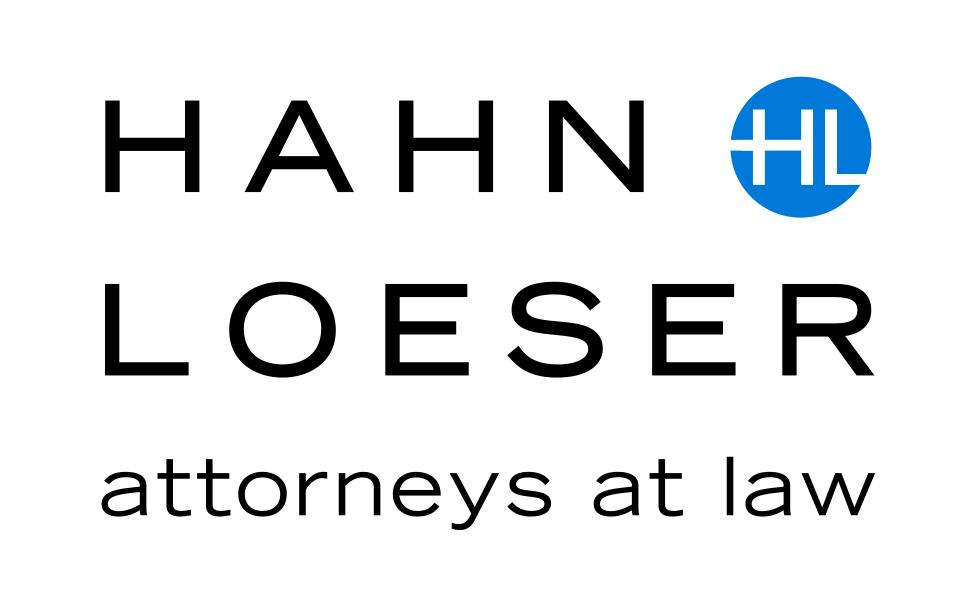BACKGROUND
Federal contractors and subcontractors have a lot to consider as they navigate the challenges COVID-19 presents to the workplace. On September 9, 2021, President Biden announced his Path Out of the Pandemic: COVID-19 Action Plan. One of the plan’s main goals is to increase vaccinations. As part of that plan, the President signed Executive Order 14042, Ensuring Adequate COVID Safety Protocols for Federal Contractors.
On September 24, the Safer Federal Workforce Task Force released Guidance for Federal Contractors and Subcontractors. The Guidance provides that covered contracts and contract-like instruments must include a clause that the contractor and any subcontractors, at any tier, shall incorporate into lower-tier subcontracts.
On October 1, the Federal Acquisition Regulatory (FAR) Council issued the draft FAR deviation clause, FAR 52.223-99¹, which must be inserted into covered contracts and subcontracts. When included in contracts and contract-like instruments, the draft deviation clause attempts to impose the Guidance on contractors and subcontractors. The FAR Council permits agencies to develop their own deviation clauses.
To assist contractors coming into compliance, we answer the questions that every federal contractor and subcontractor should be asking.
1. Which contracts are “covered?”
A contract or subcontract is covered if it incorporates the clause at either FAR 52.223-99 or DFARS 252.223 – 7999. The new clause applies to federal contracts (1) for services, (2) for construction, (3) for a leasehold interest in real property, or (4) in connection with federal property or lands and related to offering services for federal employees, their dependents, or the general public. Importantly, it does not apply to contracts or subcontracts solely for the provision of products.
Incorporation is mandatory for new solicitations and contracts awarded after November 14, 2021. It is also mandatory for existing contracts that have an option exercised or are extended/renewed after October 15, 2021. For existing contracts, incorporation is not mandatory but is “strongly encouraged.”
2. What are the exceptions to incorporation?
Excluded are (1) subcontracts “solely for provision of products,” (2) contracts and subcontracts below the Simplified Acquisition Threshold (SAT) of $250,000, (3) employees that work outside of the U.S., (4) grants, and (5) contracts with Indian Tribes under the Indian Self-Determination and Education Assistance Act.
Consistent with applicable law, agencies are strongly encouraged to incorporate a clause requiring compliance into contracts that are not covered or directly addressed by the order because the contract is below the SAT or is a contract or subcontract for the manufacturing of products. Agencies are also strongly encouraged to incorporate a clause requiring compliance into existing contracts and contract-like instruments prior to the date upon which the order requires inclusion of the clause.
3. What does the new clause require?
FAR 52.223-99 requires covered contractors to comply with Executive Order 14042 and the September 24, 2021 Task Force Guidance, plus any future guidance issued on the Task Force’s website. The requirements in the order apply to contractors and subcontractors at all tiers, except for subcontracts solely for the provision of products. The prime contractor must flow the clause down to all first-tier subcontractors; higher-tier subcontractors must flow the clause down to the next lower-tier subcontractor, to the point at which subcontract requirements are solely for the provision of products. Subcontractors working on federal projects must comply. If the subcontractor is working on a project with no nexus to a federal project, then there is no impact on the subcontractor.
Contractors should also be aware that agencies are issuing class deviations with instructions to contracting officers on how clauses are implemented.
Contractors receiving a contract modification, either unilateral or bilateral, must consider the impact of the Executive Order on their workforce, project costs, and project time (and that of their lower tiers) and reserve rights accordingly. Contractors who sign the modification, without reservation of rights and potential claims, risk waiver of the same.
4. How do contractors comply with the Task Force Guidance?
The basic requirements for compliance are (1) vaccination of covered contractor employees by December 8, 2021, (2) designation of a coordinator for COVID-19 workplace safety efforts, and (3) compliance with other safety requirements that extend to covered employees and visitors.
5. When must employees under a covered contractor be vaccinated?
The date by which employees (both full time and part time) of a federal contractor and subcontractor with a covered contract be fully vaccinated against COVID-19 (unless an exception applies), December 8, 2021, has been extended until January 4, 2022, mirroring the date contained in the OSHA emergency temporary standard applicable to medium and large employers. After January 4, 2022, covered contractor and subcontractor employees must be fully vaccinated by the first day of the period of performance on the new covered contract and by the first day of the period of performance on an exercised option or extended or renewed contract when the clause has been incorporated into the contract.
Employees’ documentation of vaccination must be reviewed; accepting the employee’s word is not sufficient. Acceptable documentation is the CDC vaccination record, a copy of a medical record documenting vaccination, a copy of an immunization record from a public health or state immunization information system, or a copy of other official documentation that includes the vaccine name, date of administration and the name of the health care professional/site that administered the vaccine.
6. How to determine which employees are covered by the mandatory vaccination requirement?
A “covered contractor employee” means any full-time or part-time employee of a covered contractor working on or in connection with a covered contract or working at a covered contractor workplace. This includes employees of covered contractors who are not themselves working on or in connection with a covered contract.
To break this down, there is a two-part analysis for determining who is considered a covered employee. First, employees who work “on or in connection with” a covered contract or subcontract are covered. This includes employees directly performing the work. But it also includes employees indirectly supporting the work. This is strictly interpreted – an employee in accounting (who gets nowhere near the construction site) that processes invoices for the federal contract has a nexus and must be vaccinated. Similarly, an employee in HR (who gets nowhere near the construction site) that hires employees who works on the federal contract job site has a nexus and must be vaccinated.
Second, employees who work at a “covered contractor workplace” are required to be vaccinated. A covered contractor workplace means a location controlled by a covered contractor at which any employee of a covered contractor working on or in connection with a covered contract is likely to be present during the period of performance for a covered contract.
Further, if a covered contractor employee is likely to be present during the period of performance on only one floor or a separate area of a building, site, or facility controlled by a covered contractor, other areas can be considered a covered contractor workplace if the covered employee could come in contact with other employees. This includes interactions through use of common areas such as lobbies, security clearance areas, elevators, meeting rooms, kitchens, dining areas, and parking lots.
7. What are the exceptions to the vaccine mandate?
There are some exceptions to the vaccine mandate. First, employees who are unable to be vaccinated due to a disability or sincerely held religious belief are entitled to a reasonable accommodation that does not cause an undue hardship.
Employees who work both permanently from home and do not perform any work related to a federal contract or subcontract are not required to be vaccinated. However, an individual working on a covered contract from their residence is a covered contractor employee and must comply with the vaccination requirement for covered contractor employees, even if the employee never works at either a covered contractor workplace or federal workplace during the performance of the contract.
Should a Federal agency have an urgent, mission-critical need for a covered contractor to have covered contractor employees begin work on a covered contract or at a covered workplace before becoming fully vaccinated, the agency head may approve an exception for the covered contractor—in the case of such limited exceptions, the covered contractor must ensure these covered contractor employees are fully vaccinated within 60 days of beginning work on a covered contract or at a covered workplace.
8. What is the compliance coordinator responsible for?
Covered contractors must designate a person to coordinate implementation with Task Force safety protocols. The designated individual must ensure that information on required COVID-19 workplace safety protocols is provided to covered contractor employees and all other individuals likely to be present at covered contractor workplaces, including by communicating the required workplace safety protocols and related policies by email, websites, memoranda, flyers, or other means and posting signage at covered contractor workplaces that sets forth the requirements and workplace safety protocols in this Guidance in a readily understandable manner. This includes communicating the COVID-19 workplace safety protocols and requirements related to masking and physical distancing to visitors and all other individuals present at covered contractor workplaces. The designated individual (or individuals) must also ensure that covered contractor employees comply with the requirements related to the showing or provision of proper vaccination documentation.
9. What are the other safety requirements that extend to covered employees and visitors?
Covered contractors must ensure that all individuals, including covered contractor employees and visitors, comply with published CDC guidance for masking and physical distancing at a covered contractor workplace. Covered contractors must check the CDC COVID-19 Data Tracker County View website for community transmission information in all areas where they have a covered contractor workplace at least weekly to determine proper workplace safety protocols. If the transmission rate is low/moderate, vaccinated employees and visitors do not need to wear masks indoors. If the transmission rate is high, all employees and visitors must wear a mask indoors, regardless of vaccination status.
Unvaccinated visitors and exempted employees must physically distance and wear masks indoors and in certain outdoor settings (such as a worksite), except when in a closed office, eating or drinking, in an environment when the mask may get wet, or performing strenuous activities that make it difficult to breathe with a mask.
10. What are the next steps for Federal contractors?
Federal contractors should review their existing contracts to determine if those contracts are within the scope of coverage for contract modification on or before the contract is extended, renewed, or an option year exercised. Contractors should also identify covered workers and workplaces.
Contractors must also keep in mind that many federal contractors and subcontractors will be subject to not only the Order, but also to the Department of Labor’s Occupational Safety and Health Administration’s (OSHA) Emergency Temporary Standard (ETS) requiring all employers with 100 or more employees to ensure all employees are fully vaccinated or able to produce a negative COVID-19 test result on at least a weekly basis, and comply with masking and social distancing requirements. For more information on OSHA’s ETS, see our prior legal alert: Answering the Top 10 Questions Employers Have About the COVID-19 Vaccine and watch for a future legal alert following the publication of the ETS.
Hahn Loeser’s Labor and Employment and Construction groups are available to assist affected businesses with any questions and concerns.
HELPFUL LINKS:
FAR Council Guidance on Agency Issuance of Deviations to Implement
Safer Federal Workforce for Federal Contractors
[1] 52.223-99 Ensuring Adequate COVID-19 Safety Protocols for Federal Contractors.
ENSURING ADEQUATE COVID-19 SAFETY PROTOCOLS FOR FEDERAL CONTRACTORS (OCT 2021) (DEVIATION)
(a) Definition. As used in this clause -United States or its outlying areas means—
(1) The fifty States;
(2) The District of Columbia;
(3) The commonwealths of Puerto Rico and the Northern Mariana Islands;
(4) The territories of American Samoa, Guam, and the United States Virgin Islands;
and
(5) The minor outlying islands of Baker Island, Howland Island, Jarvis Island, Johnston Atoll, Kingman Reef, Midway Islands, Navassa Island, Palmyra Atoll, and Wake Atoll.
(b) Authority. This clause implements Executive Order 14042, Ensuring Adequate COVID Safety Protocols for Federal Contractors, dated September 9, 2021 (published in the Federal Register on September 14, 2021, 86 FR 50985).
(c) Compliance. The Contractor shall comply with all guidance, including guidance conveyed through Frequently Asked Questions, as amended during the performance of this contract, for contractor or subcontractor workplace locations published by the Safer Federal Workforce Task Force (Task Force Guidance) at https:/www.saferfederalworkforce.gov/contractors/
(d) Subcontracts. The Contractor shall include the substance of this clause, including this paragraph (d), in subcontracts at any tier that exceed the simplified acquisition threshold, as defined in Federal Acquisition Regulation 2.101 on the date of subcontract award, and are for services, including construction, performed in whole or in part within the United States or its outlying areas.
(End of clause)



